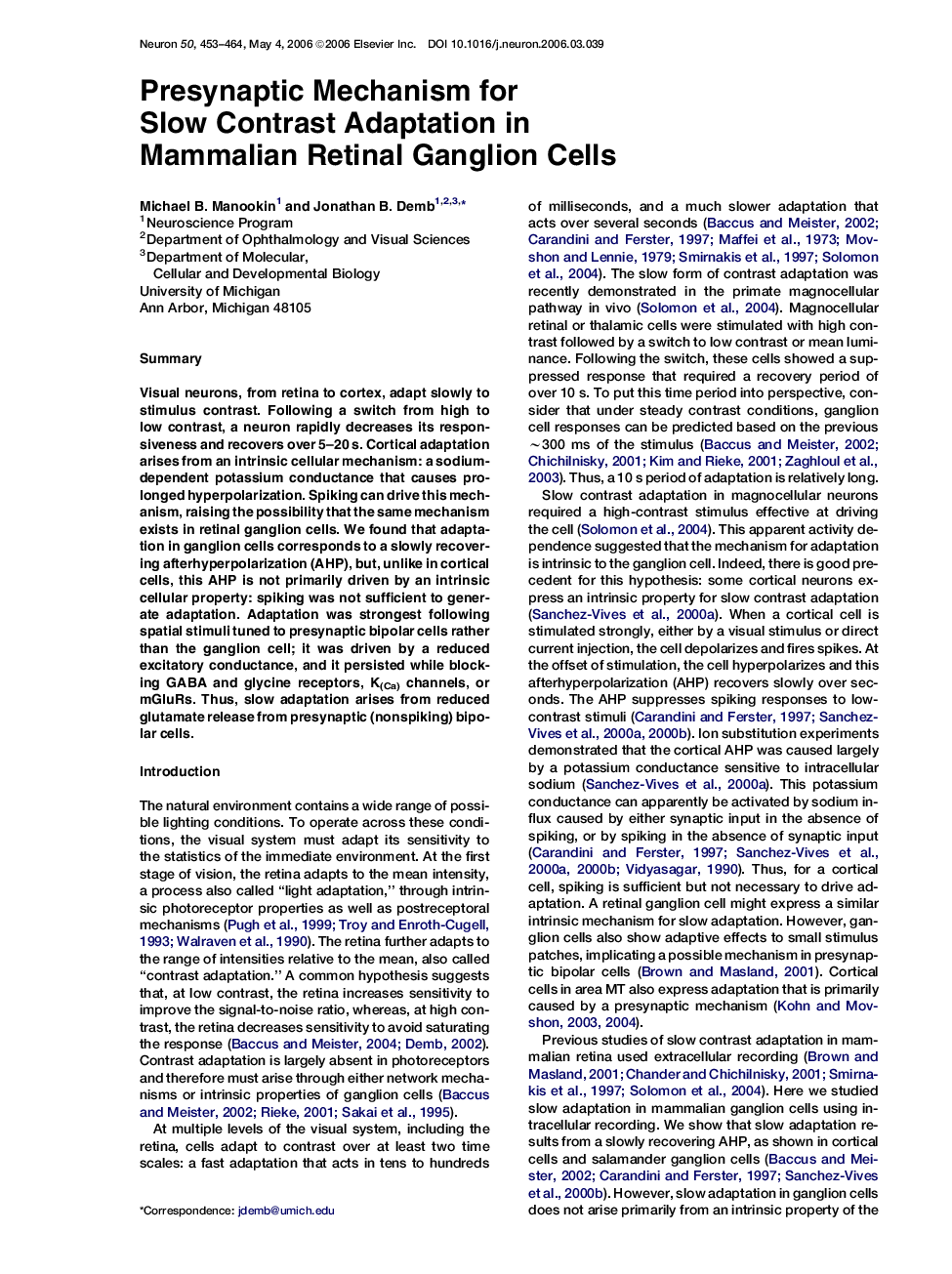| کد مقاله | کد نشریه | سال انتشار | مقاله انگلیسی | نسخه تمام متن |
|---|---|---|---|---|
| 4323372 | 1291769 | 2006 | 12 صفحه PDF | دانلود رایگان |

SummaryVisual neurons, from retina to cortex, adapt slowly to stimulus contrast. Following a switch from high to low contrast, a neuron rapidly decreases its responsiveness and recovers over 5–20 s. Cortical adaptation arises from an intrinsic cellular mechanism: a sodium-dependent potassium conductance that causes prolonged hyperpolarization. Spiking can drive this mechanism, raising the possibility that the same mechanism exists in retinal ganglion cells. We found that adaptation in ganglion cells corresponds to a slowly recovering afterhyperpolarization (AHP), but, unlike in cortical cells, this AHP is not primarily driven by an intrinsic cellular property: spiking was not sufficient to generate adaptation. Adaptation was strongest following spatial stimuli tuned to presynaptic bipolar cells rather than the ganglion cell; it was driven by a reduced excitatory conductance, and it persisted while blocking GABA and glycine receptors, K(Ca) channels, or mGluRs. Thus, slow adaptation arises from reduced glutamate release from presynaptic (nonspiking) bipolar cells.
Journal: - Volume 50, Issue 3, 4 May 2006, Pages 453–464